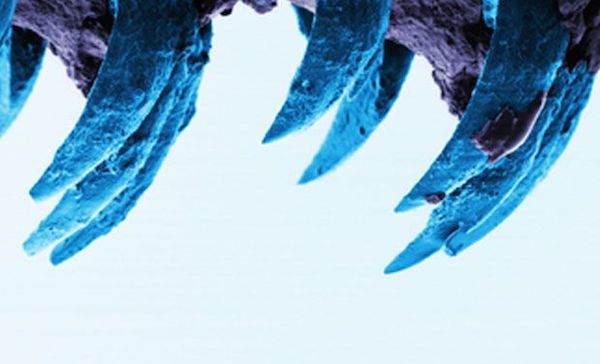Small but mighty
Recently published results from the Royal Society have revealed the strongest (known) naturally occurring material and the source of the discovery is astounding.…
A new study by researchers from the University of Portsmouth has revealed that the strongest naturally occurring material – a mantle previously held by spider silk – comes from a creature far more benign than its closest rival. The discovery could revolutionise the production of false teeth, cars, planes and yachts. The limpet, small though it may be, houses a set of teeth so strong that a new precedent has been set.
Considered by most to be a minor inconvenience when bathing in the cool seas of Britain and Western Europe, details of experiments conducted by the Royal Society on limpet teeth may change this outlook.
Researchers commented that limpet teeth “need to be mechanically robust and avoid catastrophic failure when rasping over rock surfaces during feeding”. Mechanically robust hardly seems to do the limpet justice. A diamond tipped saw is required to break the teeth of the minute gastropod with further blasting by an ion beam allowing the particles to reach experimental size, which is 100 times smaller than the diameter of a human hair.
Once sufficiently reduced in size, a barrage of experiments took place and the results were quite remarkable. “The strength of limpet teeth is, on average, 4.9 GPa – that is like trying to break a piece of spaghetti with 3,000 bags of sugar. The second strongest material is spider silk at about 4 GPa, followed by bamboo at almost 1 GPa.”
The pertinent point to take from this discovery is that limpet tooth is comparable in strength to the carbon compounds used in bullet proof vests and Formula 1 cars, the strongest and lightest of man made materials. However, limpet tooth can theoretically be reproduced without relying on harmful, unrecyclable carbon based materials. Although the application of the limpet tooth to a yacht hull is still merely a future pursuit, the green agenda gains more traction every day. Is it possible that superyachts of the future be made of synthesised limpet teeth and run on clean, renewable energy? Only time will tell.
Considered by most to be a minor inconvenience when bathing in the cool seas of Britain and Western Europe, details of experiments conducted by the Royal Society on limpet teeth may change this outlook.
Researchers commented that limpet teeth “need to be mechanically robust and avoid catastrophic failure when rasping over rock surfaces during feeding”. Mechanically robust hardly seems to do the limpet justice. A diamond tipped saw is required to break the teeth of the minute gastropod with further blasting by an ion beam allowing the particles to reach experimental size, which is 100 times smaller than the diameter of a human hair.
Once sufficiently reduced in size, a barrage of experiments took place and the results were quite remarkable. “The strength of limpet teeth is, on average, 4.9 GPa – that is like trying to break a piece of spaghetti with 3,000 bags of sugar. The second strongest material is spider silk at about 4 GPa, followed by bamboo at almost 1 GPa.”
The pertinent point to take from this discovery is that limpet tooth is comparable in strength to the carbon compounds used in bullet proof vests and Formula 1 cars, the strongest and lightest of man made materials. However, limpet tooth can theoretically be reproduced without relying on harmful, unrecyclable carbon based materials. Although the application of the limpet tooth to a yacht hull is still merely a future pursuit, the green agenda gains more traction every day. Is it possible that superyachts of the future be made of synthesised limpet teeth and run on clean, renewable energy? Only time will tell.
Profile links
Click here to become part of The Superyacht Group community, and join us in our mission to make this industry accessible to all, and prosperous for the long-term. We are offering access to the superyacht industry’s most comprehensive and longstanding archive of business-critical information, as well as a comprehensive, real-time superyacht fleet database, for just £10 per month, because we are One Industry with One Mission. Sign up here.




